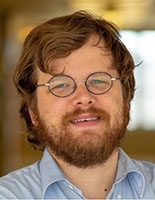NSTA Blog
Leveraging Science in the News
By Will Reed
As science teachers, particularly those of us working to implement three-dimensional (3-D) instruction in our classroom, we strive to make learning relevant to student experiences, engaging them in phenomena that have meaning in their own lives and enabling them to contextualize the learning. What better way to drive student interest than by drawing from current news headlines? Your students are probably already asking you questions about what they see on various media channels. A prime example of such a headline is the recent novel coronavirus, first documented in Wuhan, China.
Although current world events may be unrelated, or only tangentially related, to planned investigative units of study, science teachers will still find great value in answering student questions in a way that is consistent with the vision for science learning described in A Framework for K-12 Science Education. We should consider a general framework for addressing questions students have about current world events (phenomena), engaging students in science and engineering practices to make sense of those current events when possible. Appropriate initial responses include asking students to clarify the motivation for their questions and eliciting student ideas and feelings about the events, as well as additional questions.
Our follow-up responses may then include the following:
- Validating student interest, questions, and ideas
- Asking students to clarify their questions or ideas by posing questions to students
- Explaining scientific consensus to students
- Implementing stand-alone lessons rooted in students’ questions and interests
- Implementing investigative units rooted in students’ questions and interests.
Follow-up responses 1 and 2 are likely appropriate in all cases.
Response 3, explaining concepts to students directly, may not be rooted in 3-D learning. Still it may be necessary–for example, when there is no room in the planned curriculum for a new 3-D unit of study but students are worried about hygiene in response to the coronavirus outbreak or want information about where the virus is and is not being actively transmitted. The trick is attending to students’ needs without leaving students with the impression that “telling” is the root of science learning. To do so would be detrimental to 3-D learning. We must be especially thoughtful in implementing response 3 so as to not alienate students from their identities as sensemakers.
Responses 4 and 5 have the potential to leverage current events to develop students science ideas and use of science and engineering practices.Teams of teachers and curriculum developers should work together to design 3-D lessons and units rooted in common student questions and interests around current media events, including events related to disease, global change, or discovery and exploration. Response 5–whole instructional units that incorporate student development of core science ideas and concepts through the use of cascading science practices–may be infeasible in the initial aftermath of a new media event, though it may be more feasible to incorporate current events into existing instructional units when the event is relevant to the science ideas developed the unit.
Supporting student use of the science and engineering practices in classrooms to make sense of current events has the potential to function as a bridge (one among many, hopefully) for students to connect school science learning and their ongoing sensemaking of the world outside of school. In addition to developing science and engineering ideas and crosscutting concepts, practice-driven investigation of current events can be used to help students develop media literacy, social-emotional skills, or other disciplinary practices and ideas, for example from the social sciences.
Finally, a large body of research going back decades exists on incorporating socio-scientific issues in the science classroom. Supports also exist for teachers to incorporate science news (reporting recently published research of all kinds) into their classrooms on a more regular basis.
In short, designing a 3D lesson involving a current event like the novel coronavirus first reported in Wuhan, China, it is important to both attend to student interest and emotions as well as to broader curricular goals.
Interested in teaching a current world event (phenomenon-drive) lesson on the novel Wuhan coronavirus? We’ve got a lesson plan perfect for you!
Check out our learning center collection for free materials that you can use in our classroom right away.
 Will Reed is a high school STEM teacher at Gwendolyn Brooks College Prep in Chicago. He has also contributed to curriculum development for organizations such as nexgenstorylines.org, InquiryHub, and OpenSciEd. He has taught math, physical sciences, life sciences, Earth and space sciences, and engineering at various levels from 5th grade to college, and has experience facilitating science teacher professional development for pre-K-12 teachers for Chicago Public Schools, the Illinois State Board of Education, and NSTA. As a Fulbright Distinguished Teacher, Will spent the first half of 2019 living in the Netherlands learning from Dutch STEM educators. He believes that all students deserve access to meaningful, joy-filled science education and that professional communities of science educators are key to making this possible.
Will Reed is a high school STEM teacher at Gwendolyn Brooks College Prep in Chicago. He has also contributed to curriculum development for organizations such as nexgenstorylines.org, InquiryHub, and OpenSciEd. He has taught math, physical sciences, life sciences, Earth and space sciences, and engineering at various levels from 5th grade to college, and has experience facilitating science teacher professional development for pre-K-12 teachers for Chicago Public Schools, the Illinois State Board of Education, and NSTA. As a Fulbright Distinguished Teacher, Will spent the first half of 2019 living in the Netherlands learning from Dutch STEM educators. He believes that all students deserve access to meaningful, joy-filled science education and that professional communities of science educators are key to making this possible.


